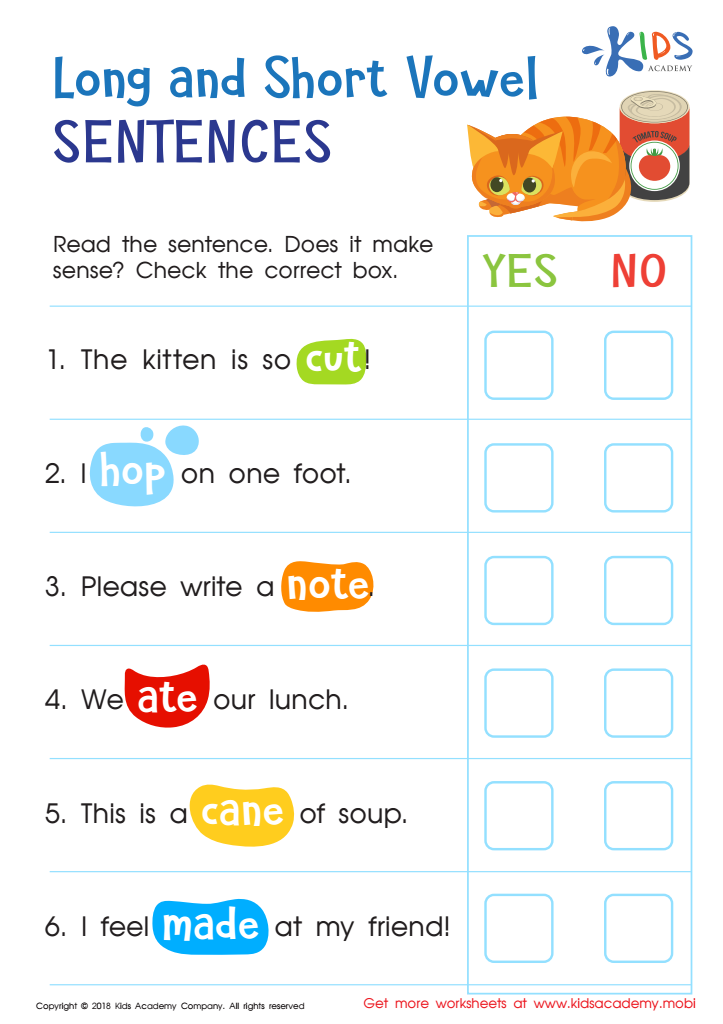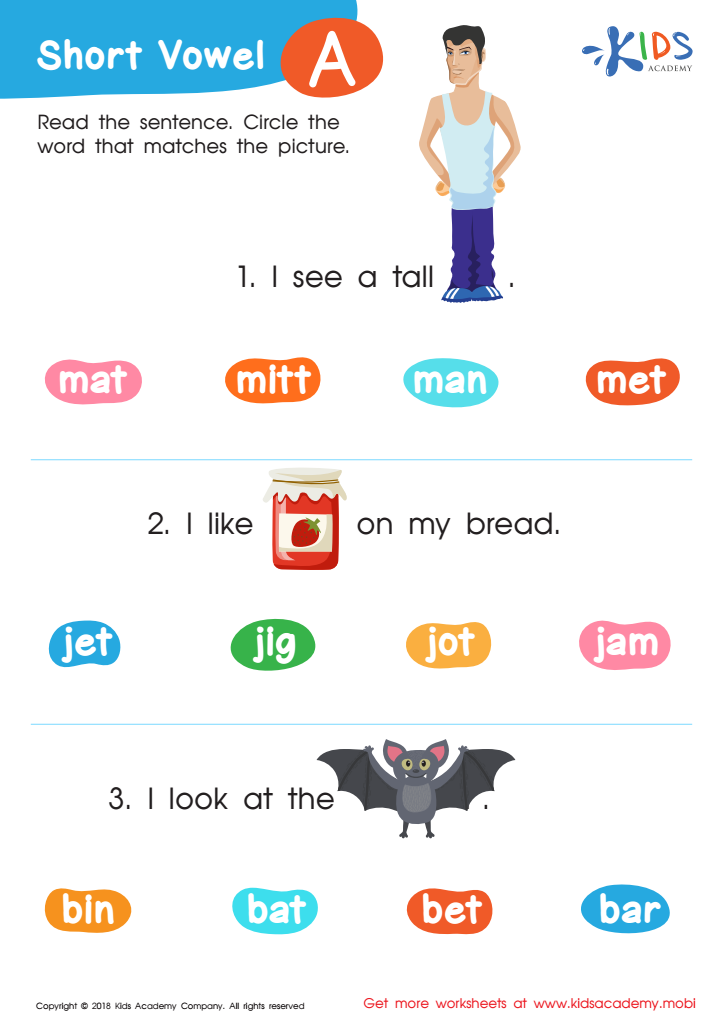Normal Short Vowels Worksheets for Ages 4-7
12 filtered results
-
From - To
Help your child master the basics of reading with our Normal Short Vowels Worksheets designed for ages 4-7. These engaging worksheets focus on recognizing and pronouncing short vowel sounds, laying a strong foundation for early literacy. Perfect for kindergarten and first grade, the activities are interactive and fun, making learning an enjoyable experience. With a variety of exercises, including matching, coloring, and tracing, your child will develop critical phonics skills while staying engaged. Boost their confidence and prepare them for reading success with these expertly crafted worksheets from Kids Academy. Unleash your child's potential today!


Reading: EA as in Bread Worksheet


Reading: Long O and Short O Sounds Worksheet


Long and Short Vowel Match up Reading Worksheet


Long or Short Reading Worksheet


The Short I Words Reading Worksheet


short vowels Worksheet


Short Vowel Eggs Worksheet


Two Sounds for OO Worksheet


Long and Short Vowel Sentences: Assessment Worksheet


Short Vowel Detective Worksheet


Short Vowels /e/, /i/, and /u/ Worksheet


Short Vowel /a/ Worksheet
Understanding normal short vowels is crucial for children ages 4-7 as it forms the foundation for reading and spelling skills that are essential for literacy development. Short vowels are common sounds in the English language, represented by sounds like 'a' in "cat," 'e' in "bed," 'i' in "sit," 'o' in "log," and 'u' in "cup." These vowels help young learners decode and pronounce words correctly, making it easier for them to read fluently.
When children grasp the concept of short vowels, they can start forming and recognizing simple, common words, which boosts their confidence and interest in reading. This age group is critical because early literacy skills are predictors of future academic success.
Moreover, having a solid understanding of short vowels aids in phonemic awareness, the ability to hear and manipulate individual sounds in words. Phonemic awareness is a vital skill that underpins later reading proficiency and overall language development. Without this foundational knowledge, children may struggle with more complex phonics, leading to difficulties in reading comprehension and writing skills.
In sum, parents and teachers should prioritize teaching short vowels to nurture a child's early literacy skills, ensuring they have a compelling and effective start to their education journey.

 Assign to My Students
Assign to My Students











